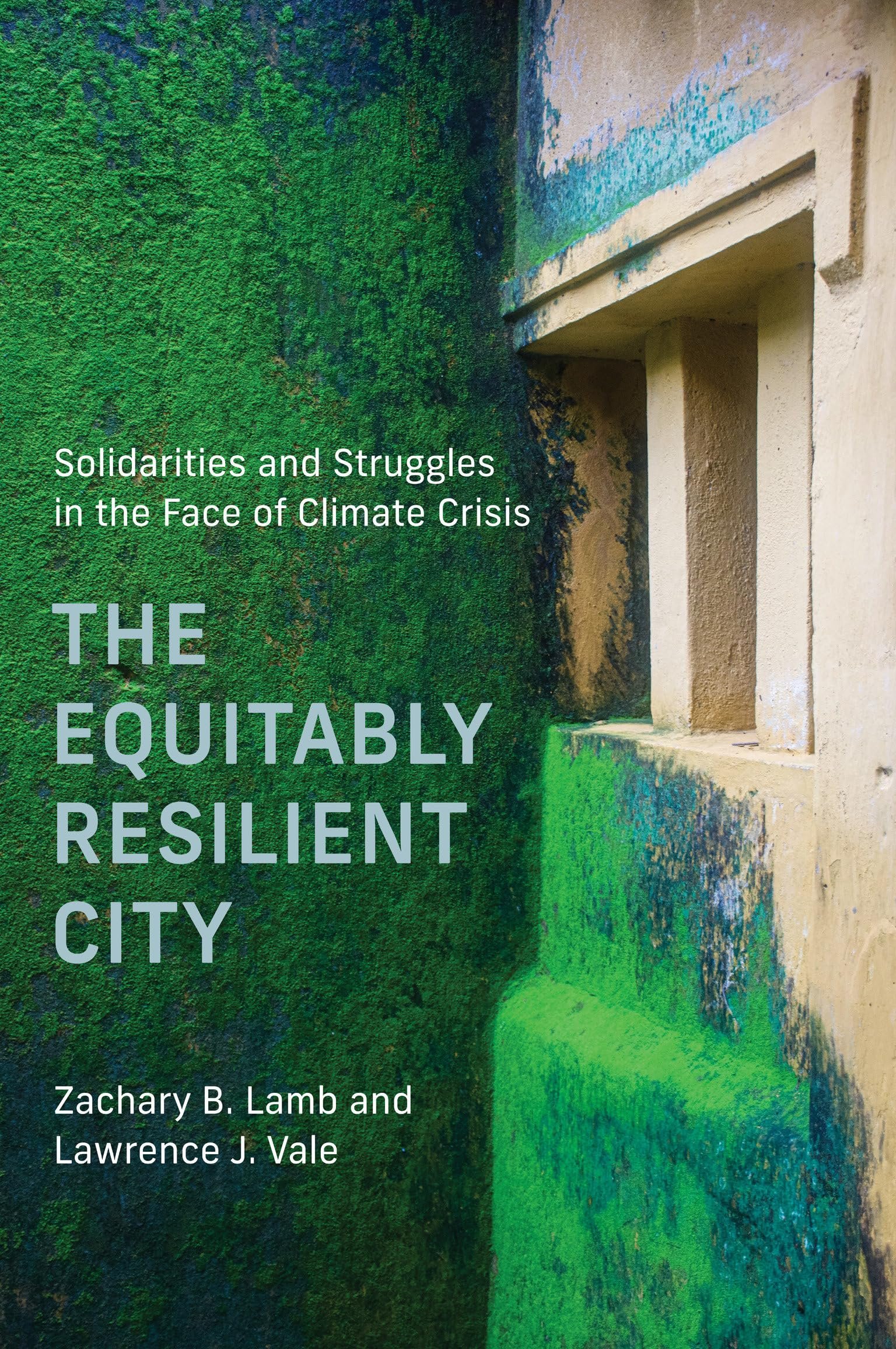
New Books: Contested City
Featuring Alissa Walter, author of Contested City: Citizen Advocacy and Survival in Modern Baghdad published in 2025 by Stanford University Press. Contested City charts the political history of modern Baghdad and how residents navigated and negotiated with the state through periods of economic growth, war, and sanctions.

New Books: Urban Power
Featuring Ben Bradlow, author of Urban Power: Democracy and Inequality in São Paulo and Johannesburg published in 2024 by Princeton University Press. Urban Power examines how social inequalities are created and addressed through the urban built environment by comparing the case studies of São Paulo and Johannesburg.

New Books: The Equitably Resilient City
From UAR’s new series, featuring Lawrence Vale and Zachary Lamb, co-authors of The Equitably Resilient City: Solidarities and Struggles in the Face of Climate Crisis, published in 2024 by MIT Press. Their book, which draws on research from twelve unique case studies around the world, asks how cities can respond to climate change and still commit to maintaining and improving the lives of their most disadvantaged residents.

Exploring the Impacts of TOD Housing Stock and Built Environments on Housing Costs in Twenty-Six U.S. Metropolitan Areas
This paper contributes to the debates on housing supply efforts and the “missing middle” argument by examining the relationships between the share of metropolitan housing units in three types of compact transit-rich built environments and TOD housing rent. The census block groups of twenty-six U.S. metropolitan areas with intra-urban light, heavy, or commuter rail service were classified into six categories based on proximity to rail, housing density, and walkability: three rail-proximate built-environment types (high, moderate, and low density and walkability) and their three non-rail equivalents. Additionally, the studied metropolitan areas were grouped into three clusters based on housing and transit characteristics.

Landscapes of Remunicipalization
After four decades of stalemated debates about privatization there is a newer and more refreshing conversation on the block: remunicipalization. Also known as “reverse privatization” and “insourcing,” remunicipalization refers to a process of returning services back to state ownership and management after a period of private sector control.

Arguing over Transportation Sales Taxes
Voter-approved local option sales tax (LOST) measures for transportation increasingly fill gaps between falling fuel tax revenues and growing transportation investment needs. There are concerns, however, over whether LOSTs are an equitable transportation finance mechanism. Equity is a critical concept in public policy and finance, and debates over resource distribution on fairness grounds are often contentious. Sales taxes are typically regressive—disproportionately burdening low-income residents—and disconnected from transportation system usage.

Scholars Exchange: Municipal Takeovers
Municipal takeover policies claim to eschew politics. These policies, which rest on the principle that local government is broken, suspend local democracy in an attempt to fix local fiscal problems. Fear of municipal bankruptcy, economic contagion, and credit downgrades are among the most common motivations for intervening in local municipal affairs. These changes radically rearrange how decisions are made, who has access to decision makers, and, ultimately, who is in power. Many states have adopted or copied municipal takeover policies from each other; as such, when the policies are put in place, we may expect to see similar results or responses from local communities.

Citizen Partisanship, Local Government, and Environmental Policy Implementation
Early on in the Trump administration, it was clear that the role of the federal government in environmental protection would be lessened, with then Environmental Protection Agency administrator, Scott Pruitt, suggesting that the Trump administration would focus on “cooperative federalism,” emphasizing the role of states in environmental regulation. The developments at the federal level have led scholars and journalists alike to question how this prioritization of state administration in environmental policy will impact implementation.

Light-rail Investment in Seattle
Public infrastructure has always shaped patterns of metropolitan growth and residential segregation. Street-car lines, followed by highways, created important corridors from cities out into the so-called “Crabgrass Frontier” (Jackson 1985). New access to undeveloped suburban areas combined with government-insured mortgages with low down-payments generated vast opportunities for housing construction. However, through much of the 20th century “redlining”, discriminatory housing covenants, and exclusionary zoning maintained a system of residential stratification preventing racial and ethnic minorities from moving outward to burgeoning suburbs. Consequently, many urban neighborhoods became racially-segregated, faced disinvestment due to housing policy favoring lending to suburban contexts, and experienced increasing “mismatch” from suburban employment growth.

Fiscal Secession
Local governments across the United States often find themselves needing to seek out new revenue sources, particularly in the face of state limitations on taxation. Our research examines the usage of special assessments, a particularly popular, but understudied source of local revenues, in the state of California. Today, special assessments are commonly used to back local infrastructure projects and provide growing number of public services, from local fire and police protection to street maintenance and repair.

Public Housing Participation in Superstorm Sandy Recovery
In February in New York City, the Citywide Council of Presidents, an elected body representing over 400,000 tenants of the New York City Housing Authority (NYCHA), took the unprecedented step of suing the agency. Resident leaders sought an independent monitor for the Authority, pointing to high-profile health and safety failures including a lapse in lead paint inspections with fraudulent reports to the contrary from the Chairwoman, Shola Olatoye, and sporadic heat and hot water during a frigid winter.